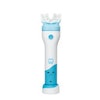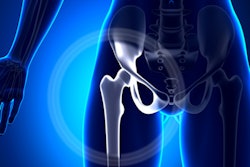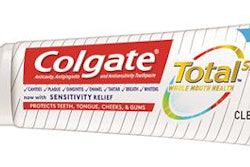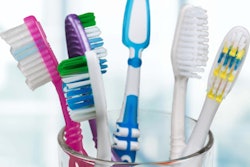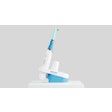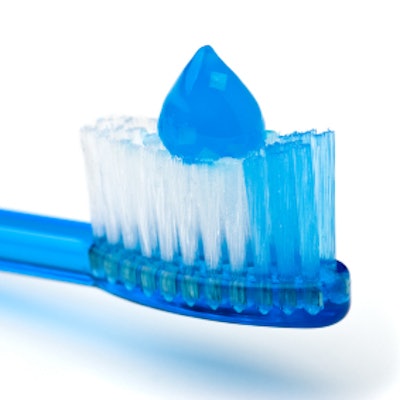
Triclosan in toothpastes can be absorbed and later released by toothbrush heads, a new study has found. But triclosan exposure can be limited, such as by using toothbrushes that are the least likely to accumulate the chemical and by changing used toothbrushes.
The U.S. Food and Drug Administration (FDA) banned the use of triclosan in over-the-counter antiseptic washes in 2016 because of health and environmental concerns, including hormone disruption, antimicrobial resistance, and environmental toxicity. However, triclosan has oral health benefits, so it is still approved and regularly used in toothpastes and other oral care products, such as Colgate Total (Colgate).
In light of the FDA's ruling, a team of researchers from the U.S. and New Zealand sought to discover whether toothbrushes could absorb triclosan from toothpaste. Their findings, which were published in Environmental Science & Technology (October 25, 2017), showed that triclosan was one of several chemicals absorbed by brush heads.
"Having worked on polymer sorption for some years, we expected triclosan to show some degree of accumulation in toothbrush head components and release once users switched toothpastes," lead author Jie Han, PhD, told DrBicuspid.com. "But what we did not foresee is that other chemicals also show this type of behavior."
Han is a postdocotral associate at the University of Massachusetts (UMass) Stockbridge School of Agriculture. His co-authors also hail from UMass, as well as the University of Auckland in New Zealand and the Connecticut Agricultural Experiment Station.
Toothbrushes can retain triclosan
Through previous research, Han and colleagues found that a type of nylon regularly used for toothbrush bristles can rapidly accumulate triclosan. However, what they didn't know was whether triclosan accumulated on toothbrush heads and, if so, whether it was later released when a user switched to a toothpaste that didn't contain the additive.
To find out, they tested triclosan accumulation on 22 types of popular manual toothbrushes in the U.S. Although Han was unable to provide specific product names, the toothbrushes were all by Colgate, Oral-B (Procter & Gamble), Equate (Walmart), and Reach (Dr. Fresh), and they came in a variety of styles and price ranges.
 A sample toothbrush with thermoplastic elastic parts between the bristles and on the back.
A sample toothbrush with thermoplastic elastic parts between the bristles and on the back.The researchers placed 1.0 grams of FDA-approved triclosan toothpaste on adult brushes and 0.5 grams of triclosan toothpaste on children's brushes. They then simulated brushing for two minutes, two times per day for 12 weeks.
At the end of the 12 weeks, the majority of the brushes had accumulated at least some triclosan from the toothpastes, but how much triclosan was accumulated varied greatly by brush and bristle type. As the researchers expected from their previous research, brushes with nylon bristles accumulated substantially more triclosan than brushes with non-nylon bristles. Softer bristles also accumulated more triclosan than firmer ones.
However, brushes with thermoplastic elastomer (TPE) parts seemed to be the real driver of triclosan accumulation. Thermoplastic elastomer parts are the soft, rubbery, and often colorful components added to toothbrushes to improve grip, polish teeth, and clean the user's cheeks and tongue.
"Certain types of TPEs have the ability to absorb lipophilic (oil-loving) chemicals in contact, and this can contribute to larger amounts of accumulation," Han explained.
Triclosan can also be released
The researchers also studied the release of triclosan once a user switched to a toothpaste without the chemical. They specifically tested the type of toothbrush that accumulated the most triclosan during the first part of their trial: one with a full-size head, nylon bristles, and TPE by Kraton.
That specific toothbrush released between 1.0 mg and 2.2 mg of triclosan per brushing during the first three days of use, which accounts for 35% to 73% of the amount of triclosan released from a triclosan toothpaste, the study authors noted. Although this isn't as much exposure as when using a triclosan toothpaste, Han and colleagues were still concerned that this uncontrolled release hasn't been studied and that other chemicals could be collected and released by toothbrush heads.
"We are now conducting studies to investigate the aftermath of chemicals accumulated in toothbrushes," Han said. "This will help us clarify if there is indeed any risk resulted from such behavior."
How to limit triclosan exposure
So what type of toothbrush should you or your patients use if you're concerned about excess triclosan exposure? In their paper, the authors suggested skipping brushes that have TPE components and instead to opt for a bristles-only toothbrush. These also happen to be some of the cheapest on the market, they noted.
Han also recommended getting a new toothbrush when switching toothpastes. This eliminates the risk of additional exposure from chemicals that have accumulated and then are released from the previous toothbrush.
"Users could dispose of their used toothbrush when switching to a new toothpaste," he said. "The accumulation [of triclosan] does not pose risks if users dispose of their used toothbrush."



